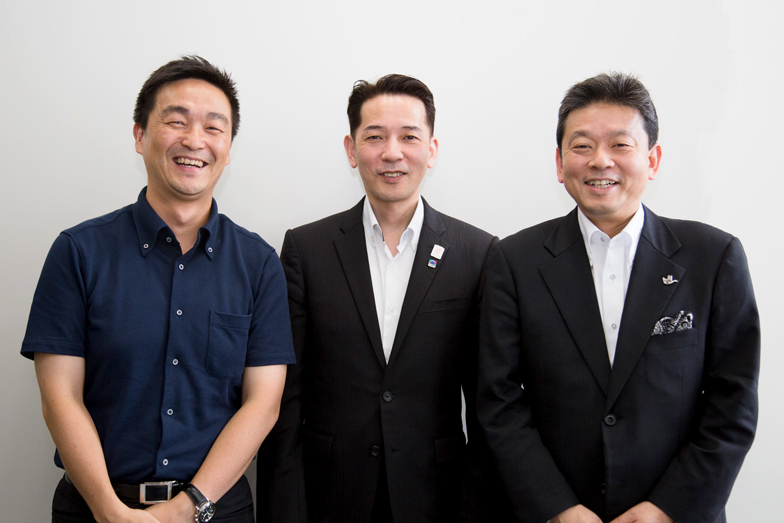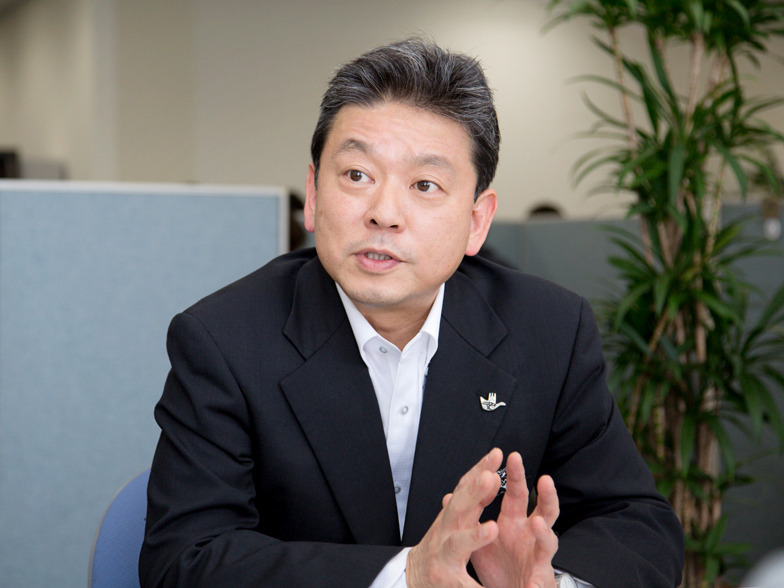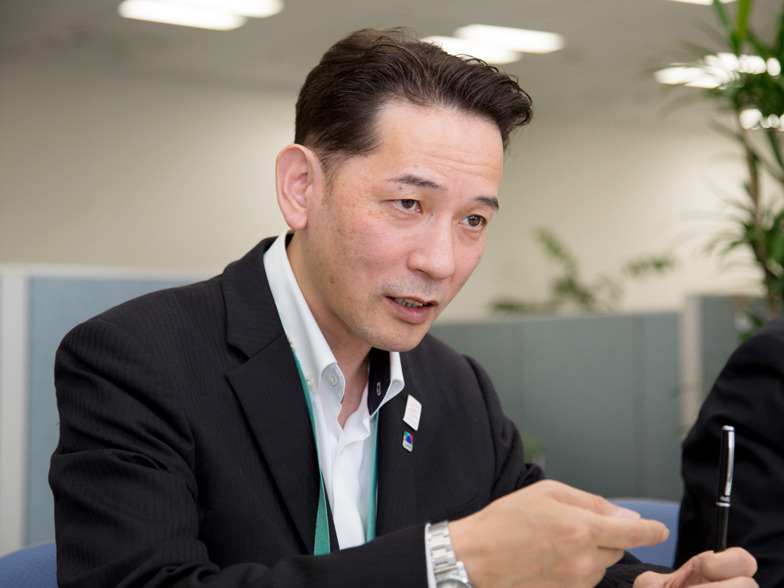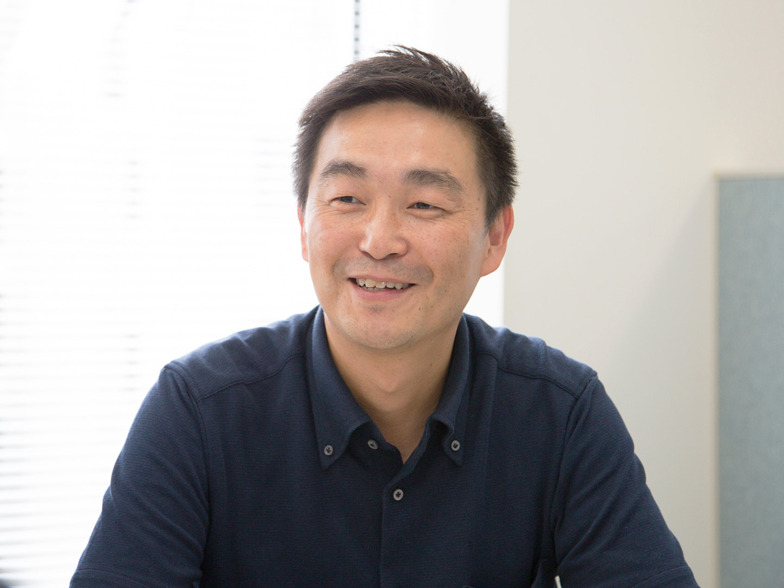The ongoing Milan International Exposition (Expo Milano), themed "Feeding the Planet, Energy for Life," features participation from over 140 countries and regions. We interviewed Takao Sashida and Akira Ashizawa of Sogo & Seibu, who collaborated with designer Oki Sato—producer of the "Cool Japan Design Gallery" within the Japan Pavilion—on the project.
Interview, Editing, and Composition: Aki Kanahara, Dentsu Inc. Event & Space Design Bureau
Sogo & Seibu's Creative Approach: Integrating Ooki Sato with Traditional Crafts
Urahashi: What were your first impressions upon hearing about the "Cool Japan Design Gallery" at the Milan Expo?
Sashida: Our company participates in the Japan Creative Association as part of our ongoing efforts. This initiative aims to revitalize Japan's traditional industries by promoting globally the creation of new products that incorporate modern design using traditional Japanese techniques. I saw this as an opportunity to widely share the very work we've been doing on a global stage like the Expo.
Urahashi: Mr. Sato Ooki's design was quite aggressive, featuring a monochromatic black aesthetic that excluded color. What were your initial impressions when you first saw it?
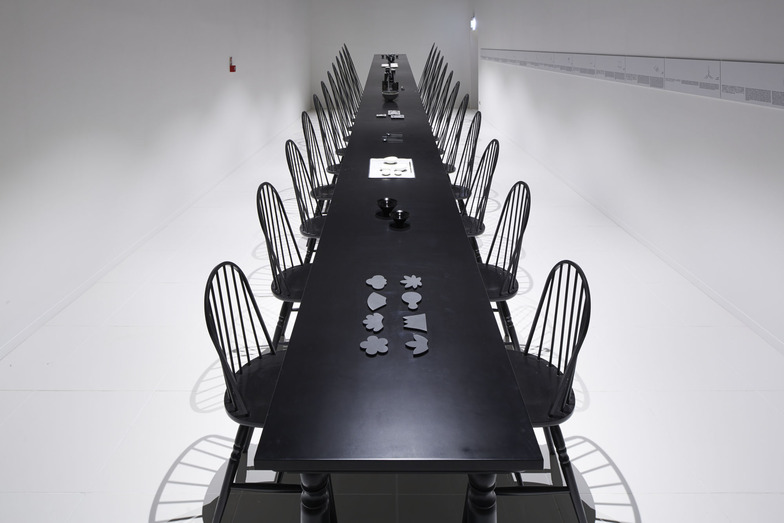
Cool Japan Design Gallery
Sashida: It was very shocking, but I thought "shocking" meant something outside my past experience. I sensed that by eliminating color, Sato focused his proposal on conveying the certainty of craftsmanship through detail. I realized it was a new means of passing on craftsmanship to the next generation.
Urahashi: I imagine the schedule was quite tight. How was the production management?
Sashida: It was extremely tight. While traditional Japanese techniques have their merits, rooted in ancient methods with a completely different pace of time compared to today, creating new designs at the speed demanded by the modern era required developing new techniques. For the makers, it was a wonderful opportunity for evolution in passing traditional techniques on to the future.
Between Traditional Craftsmanship and Design Concept
Urahashi: Mr. Ashizawa, you were the one coordinating between nendo (Mr. Sato Ooki's office) and the artisans. What did you feel as you progressed?
Ashizawa: Sogo & Seibu has already realized quite a few projects with nendo, but the time constraints leading up to this Expo were the most severe.
Yet within that, we traversed Japan from north to south—from the bentwood boxes of Akita's Odate in the north to Kagoshima's Satsuma ware in the south. To realize the subtle design vision Mr. Sato sought across these scattered production areas, we paid even greater attention than before to avoid miscommunication in detailed exchanges. For instance, when we could technically achieve something but needed specific advice, we ensured clear communication.
Urahashi: Which piece was the most challenging to complete?
Ashizawa: None came easily, but if I had to pick one, it would be the Edo Kiriko. Within the theme of using only black, creating this shape on a black base was relatively straightforward. However, the cutting artisan initially refused, stating, "This is impossible."
The cutter explained that with standard colors like lapis blue, red, or clear, they can see through to the opposite side while cutting, allowing them to predict the final shape. With black, however, the reverse side is completely invisible. Moreover, they must precisely connect the final line in a straight path. If the final cut is off when rotating and cutting, the entire alignment fails. It might look simple, but it's incredibly tricky, he told us.
But once they decide to do it, the craftsmen have an incredibly strong mindset to make something good no matter what. I think they delivered a truly impressive finish that left us deeply impressed.

The "Cutting" Technique of Edo Kiriko Craftsmen
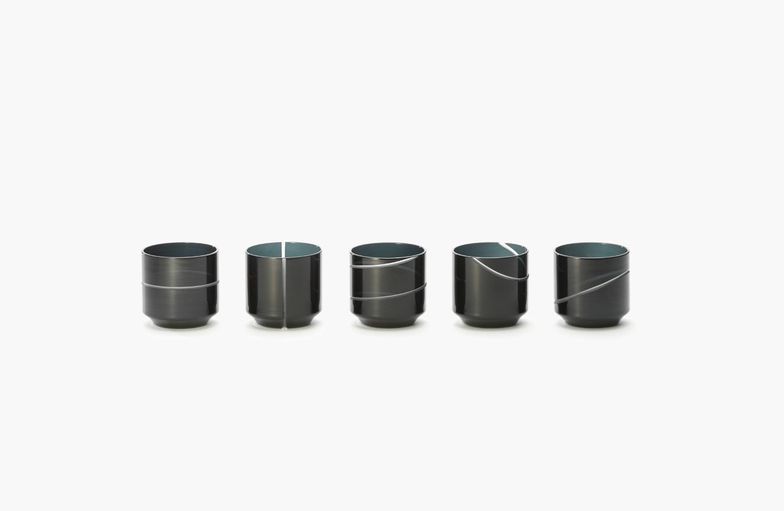
Edo Kiriko in solid black, featuring only a single cut
Urahashi: It's exactly as Mr. Sato intended—a design that highlights the artisan's skill.
Ashizawa: That's right. With Sato-san's designs, you basically never get anything at the level where the craftsmen say, "Oh, we can do that. Sure, sure, we'll handle it." He challenges them with pieces that have a subtle level of difficulty—things that might be manageable with new ingenuity or techniques.
Urahashi: The bentwood lunch boxes from Odate also look quite challenging.
Ashizawa: We commissioned the work from the Odate Kogei Company in Akita. They bend the cedar boards used for things like the well-known lunch boxes. When the craftsmen first saw this design sketch, their reaction was something like, "Huh? This is impossible."
Why? Because bentwood boxes involve bending the wood, then joining the pieces together to form a circle. Only when it's joined does it become a "bentwood box." But creating just a spiral without joining the pieces? That concept had never existed within the realm of bentwood boxes.
Furthermore, creating gaps or spaces between the swirls was something we'd never attempted before. The original structure was designed to form a simple circle. So, how do we create that gap? We calculated the thickness meticulously and bent various fiber-based materials together. The goal was to create space between adjacent boards, making it as uniform as possible. We decided heat-resistant fiber materials would be best for this joint bending process. To achieve this, we had to commission the creation of entirely new machinery. It was truly a piece that would make any craftsman cry.
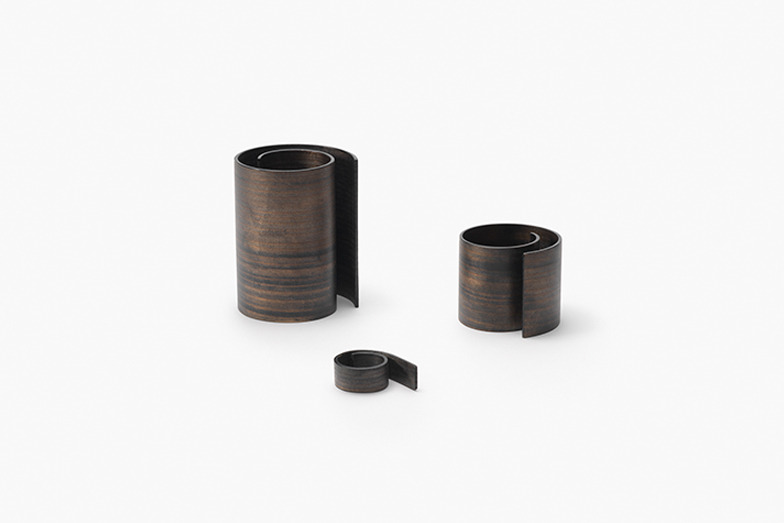
Odate Bent Wood Box
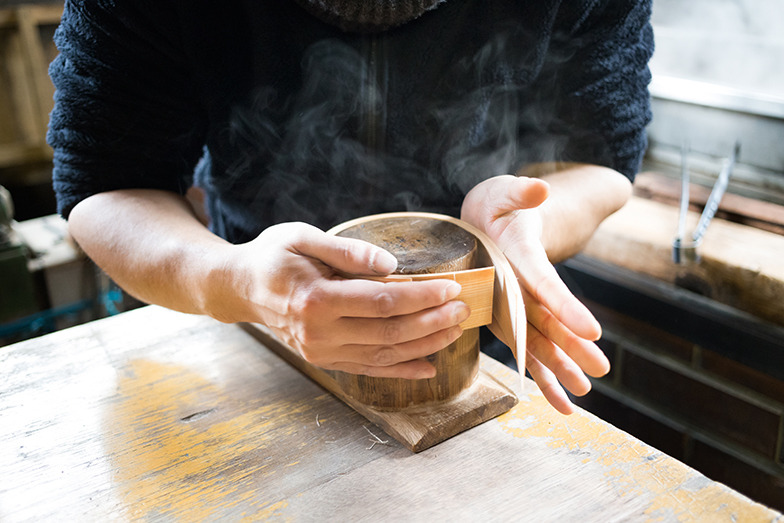
The Artisan's "Bending" Technique
Urahashi: As mentioned earlier, Sogo & Seibu has long been running a project connecting Mr. Sato Oki with traditional techniques, right?
Sashida: We see the Expo as a major opportunity to restart and pass on Japan's traditional techniques to future generations. Therefore, it's also our job as a department store to encourage customers to purchase these items and make the effort to use them properly. Consequently, we were determined to commercialize them.
What Sogo & Seibu Envisions: Future Manufacturing and Distribution
Urahashi: When looking at the market, including overseas, do you have a vision for new channels or methods to spread traditional techniques?
Sashida: As part of the Seven & i Group, we are challenging ourselves to create a new kind of department store for the omnichannel era. Our group's major strength lies in possessing both online and offline capabilities. By collaborating with group companies, we will contribute to the integration of online and offline, enabling shopping, product pickup, and various services that transcend business format boundaries, adapting to the changing times.
In this context, the texture and the actual effort involved in craftsmanship can only truly be understood by seeing and experiencing the physical item. We believe appealing to customers through physical stores is extremely important.
Observing recent purchasing trends, we see a clear rise in the keyword "authentic, long-lasting items" for department stores. This shift is likely significantly influenced by the experience of the earthquake disaster. People are increasingly focused on how satisfied they are with their current lives. The quality and sense of the items they use daily resonate with their sensibilities, enriching their lives – this mindset is truly becoming very prominent.
In this sense, Japan's traditional craft techniques represent authentic, time-honored quality passed down through generations. I believe future generations will continue to appreciate both the skill and the quality embodied in these crafts.
From the perspective of the artisans themselves, the question becomes: how can they immerse themselves in their craft? Conversely, what is missing that prevents them from fully dedicating themselves? The answer lies in whether there is a place where the tangible results of their hard work can reach people's hands. The presence or absence of such a place makes a world of difference in their motivation to create. This is also crucial economically. To pass on these crafts, economic stability is essential. Therefore, whether online or in physical stores, it's vital for us to continue providing a platform that truly understands the intentions of these creators and properly presents their work to customers. We intend to keep advancing such initiatives.
Urahashi: Thank you very much for sharing your wonderful vision.
<End>






